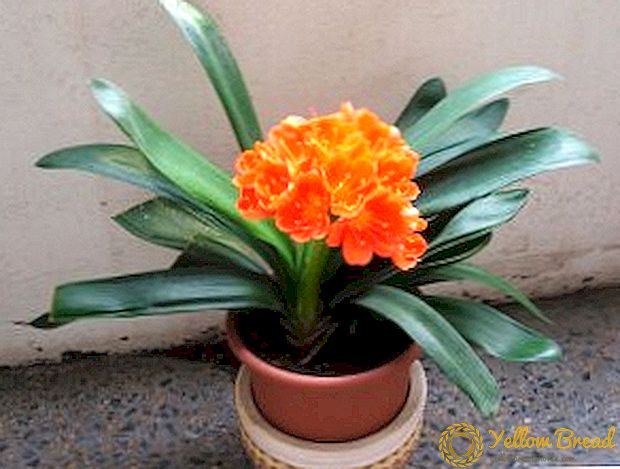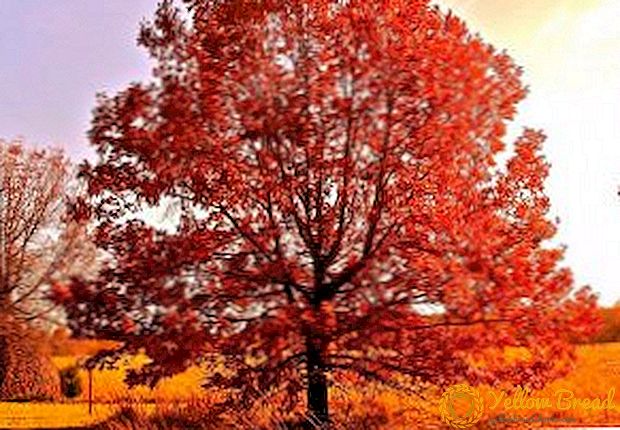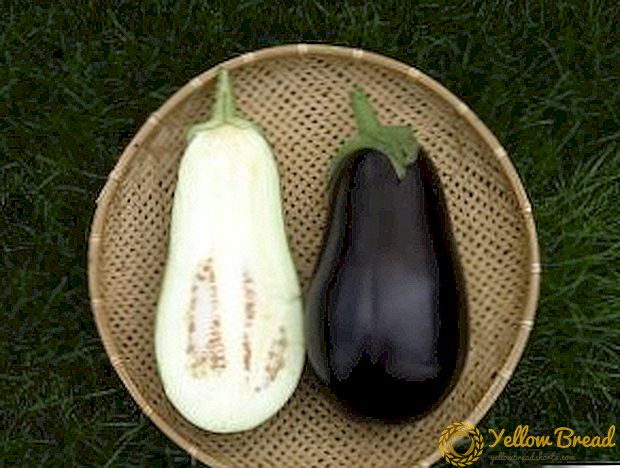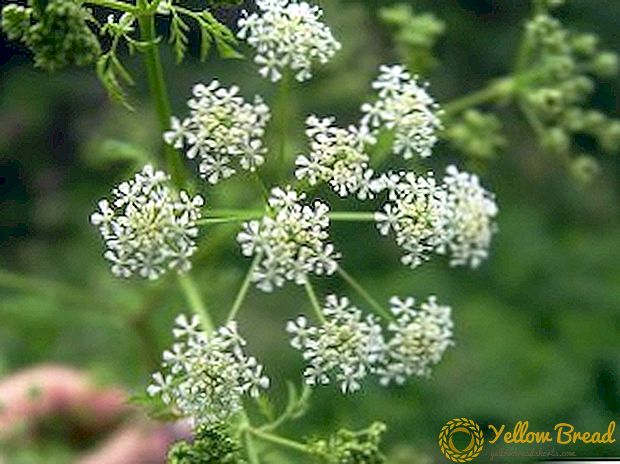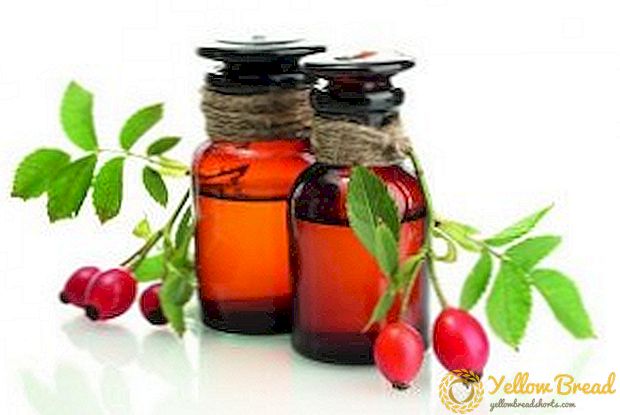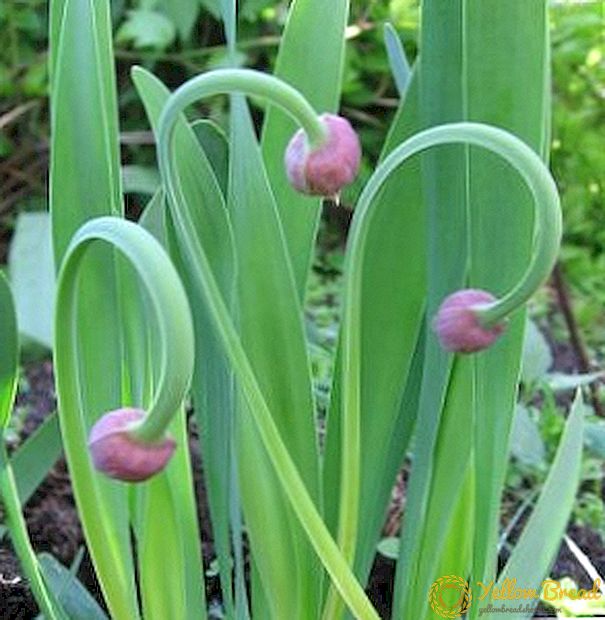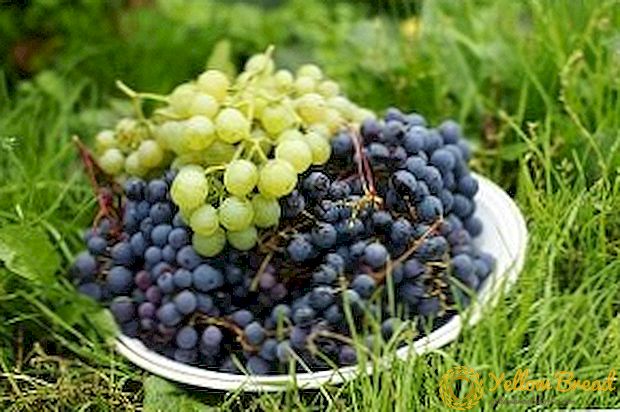
It would seem that such an agricultural crop as grapes, heat-loving and sunny, should grow in warm countries, but lovers of grapes have found ways to grow it in Siberian conditions.
Of course, such a culture could not grow in such cold conditions, so cold-resistant varieties were selected by the selection method.
Today we will talk about the distinctive features of the northern vineyards, which varieties have adapted to cold conditions and methods of its cultivation.
- The main grape varieties of Siberian selection
- Russian early grapes: its yield and ripening period. What are the disadvantages and advantages of planting this culture
- The advantages of planting Russian early grapes
- Disadvantages of this variety
- Garden grapes Pearls Saba: its main characteristics
- Pearl Grape Benefits
- The disadvantages of this grape variety
- Grade of Delight: what is it really this delight?
- We reveal all the benefits of growing grapes Delight
- The disadvantages of growing this grape
- Grape variety Riddle: reveal all his secrets
- What are all the advantages of the Mysterious grape: briefly about the most important points of this culture
- Rusbol grapes or its second name is kishmish Mirage. We discuss the main characteristics, advantages and disadvantages of this culture.
- We reveal all the positive aspects of Rusbol grapes
- Talk about the negative qualities of this variety.
- Growing sorts of grapes of Siberian breeding at the dacha: what are the features and timing of planting
- Caring for grapes grown in Siberia: highlights
- What you need to know about the care of grapes in the northern conditions
The main grape varieties of Siberian selection
In this conversation we will touch on such five Siberian grape varieties as Russian Early, Saba Pearl, Delight, Riddle and Rusbol. Let's talk about the pros and cons of each of them, about the distinctive features, as well as about the care and planting dates.
Russian early grapes: its yield and ripening period. What are the disadvantages and advantages of planting this culture
The variety of this grape is the best of the varieties of table grapes. The rate of ripening it early. The final ripening of the fruits occurs in 105-115 days. Ripe grapes can already be harvested in early August. For 4 years, grapes build up perennial wood, which has a huge impact on its productivity in these years.This fact can be upsetting inexperienced gardeners, but as they say, they have been waiting for the promised 3 years, in our case 4.
Winegrowers will have to take into account the fact that it takes a lot of places, about 5 m. The fruits of grapes are round, pinkish-lilac color. The average yield per adult bush is 25 kg. Bunches have an oblong shape. The taste of the grapes is sweet with some sourness.
The advantages of planting Russian early grapes

• Bring a large number of crops, only one shoot can give up to three clusters.
• Good safety during transportation.
• Ability to grow it in harsh climatic conditions.
• Early ripening grapes.
• Well resists diseases such as gray rot, oidium.
• Long shelf life.
• Does not require a lot of care.
Disadvantages of this variety
• Small berries (3-5 grams)
• There are seeds in the grapes.
Garden grapes Pearls Saba: its main characteristics
Like the previous grape, Saba Pearl is a table variety, very early ripening. The growing season is about 100 days, which makes the grapes very attractive to gardeners.The size of the berries themselves is very small and reaches its maximum of 4 grams, the clusters, respectively, are also small in size (300-500 grams).
The average, and in some years, the low yield of this variety alarming gardeners. Saba pearls are high quality grapes. His taste is sweetish. It has a slightly oval shape and a yellowish-green color.
Pearl Grape Benefits
• Resistance of grapes to low temperatures (-23 ° C). But like any other grape is worth warming.
• Compared to other varieties, it has a very early ripening period.
• It has a high content of vitamin C.
• Also tolerates drought well.
• Fruits well on stepchildren.
The disadvantages of this grape variety
• Low transportability.
• Grapes are unstable to various diseases.
• Late harvesting leads to his death, so you should monitor the ripening of the grapes.
• This variety is not suitable for growth near gazebos or tall buildings.
• In rainy and wet weather, it cracks easily.
Grade of Delight: what is it really this delight?

The name of the vine delight speaks for itself and is fully responsible for its taste.The term of ripening of this variety is 110-120 days, this suggests that the culture is early. Fruiting of the grapes occurs at 2 sometimes 3 years later. The fruitfulness of the grapes is very high. For better yields, it is worthwhile to place it near high arches and arbors.
The bushes of grapes are vigorous, have large clusters weighing up to 1 kg, and sometimes up to 2 kg on large formings. One grape berry weighs 5-6 grams, characterized by white color and juicy fleshy flesh of sweet taste.
We reveal all the benefits of growing grapes Delight
• Survives at high frosts -26 ° C, sometimes does not even require insulation.
• This grape is suitable for transportation over long distances, while not losing its appearance and taste.
• A plus is the fact that it practically does not give in to various diseases that are characteristic of this crop, which allows even inexperienced gardeners to get great harvests.
• Importantly, always yields high yields.
• Does not require scrupulous care, which most people like. Fertilization and supplemental care react very well.
• Cuttings root very well.
The disadvantages of growing this grape
• Poor tolerance of the lack of sunlight, due to which there is poor maturation of the vine and inflorescences.
• Insufficient moisture affects the sweetness of the grapes.
Grape variety Riddle: reveal all his secrets
This crop is one of the most popular varieties of early ripening. It is already possible to taste grapes for 110 days of the growing season, and when growing them in greenhouse conditions for 16-20 days earlier. In order to get a good harvest in the future, it is necessary to leave one vine in the first year of planting of an annual seedling (this is necessary for lignification of the sprout), then next year you will receive the first harvest.

Experienced winegrowers formed the opinion that this crop is the most reliable for growing in the northern regions. The weight of the cluster of mysterious grapes is 700-900 grams, and in some cases reaches up to 1.7 kg. This variety contains bones. The grapes are medium in size, have a dark blue skin and juicy melting in the mouth pulp.
What are all the advantages of the Mysterious grape: briefly about the most important points of this culture
• As the Siberian culture is naturally frost-resistant, up to -32 ° C, it can overwinter in a bent down state. And if it is insulated, it tolerates cold even down to -40 ° С.
• Good resistance to fungi of various kinds.
• Good preservation, does not lose taste and appearance qualities for several months.
• The advantage is the early ripening of the grapes.
• The fruitfulness of the crop is preserved even if you shortly cut the vine, because it does not require its maturation to a great length, and small bushes are easier to snatch from frost.
• This variety is good for growing with novice gardeners, as it always gives a positive result.
• A feature of this grape is its ability to resist soil freezing.
What are all the same hidden imperfections grapes "Riddle":
• Be sure to ensure that the inflorescences are not overloaded with shoots. • In the culture of this variety there are bones.
Rusbol grapes or its second name is kishmish Mirage. We discuss the main characteristics, advantages and disadvantages of this culture.

This grape variety has become a favorite not only among children, but also among adults. It has a relatively short growing season, an average of 115 - 125 days. The yield of this variety is very high, the grapes belong to the so-called varieties "suicide", overloading themselves with a crop. Therefore, for normal development, it is necessary to monitor the inflorescences of grapes.
Begins to bring a good harvest for 2-3 years. The size of the grapes of this grape is 600 grams, and sometimes 1 kg. The berries themselves are small, seedless, white, have the shape of an oval. It is characterized by the usual sweet taste, with a high percentage of sugar content. Gardeners have assigned this variety the second name “grapes for beginners”, as any person who has never been involved in grape cultivation can grow it in his garden.
We reveal all the positive aspects of Rusbol grapes
• It has good resistance to fungal diseases inherent in this variety.
• It has large and sometimes very large branches of grapes and an excellent sweet taste.
• Suitable for drying.
• It is one of the best pollinators for other grape varieties blooming at one time.
• Rusbol is a high-yielding grape variety.
• The advantage of this culture is also a good rooting rate of cuttings.
• Resistant to high frost (-25 ° C).
• This grape variety can be grown on short forms that will not affect its yield.
• Rusbol is a seedless grape variety.
• It is also important that children like it.
Talk about the negative qualities of this variety.
• Grapes do not tolerate long-distance transportation.
• Has a non-marketable appearance.
• In this grape variety, rudiments (seed buds) predominate, which does not very well affect its attractiveness.
• In rainy weather can rot and crack.
Growing sorts of grapes of Siberian breeding at the dacha: what are the features and timing of planting

Many people think that the Siberian conditions are not suitable for the cultivation of such a heat-loving crop like grapes, but experience shows the opposite. Planting grapes in those places has its key points. Each grower has its own characteristics of planting grapes, but we will talk about the general conditions. The grapes are planted in late April or early May, but more winter-hardy varieties can be planted in the autumn.
First you need to choose the right place for planting grapes, which should be on the sunny side of the site, it should also be higher and drier. The pit is prepared in advance with a size of about one meter and a depth of 1-1.3 m, the bottom is filled with humus with a part of excavated soil and mineral fertilizers, then again with humus. In this case, it is necessary to compact each layer with its feet.
In the center of the planting pit, we dig out another pit of such a depth that the sapling can fit there, only 15-25 cm should remain on the surface. Then the buried sapling is watered with 1-2 buckets of water. The young vineyard does not require scrupulous care, it should be watered 1-2 times in seven days, depending on the soil on which the crop grows.
Caring for grapes grown in Siberia: highlights
What you need to know about the care of grapes in the northern conditions
• One of the main aspects of caring for grapes in the northern conditions is pruning. It is known that the Siberian autumn is shorter than the European one, because of which the local pruning differs from that pruning. The first and most important pruning is carried out in the periods: from mid-August to the end of September, when the last crop is harvested, but there are still green leaves.It is necessary to remove the vine giving fruit, weak and thin shoots, dried branches and places that were damaged by fungal diseases.
The second stage of pruning should not be left for the spring period, but it is necessary to produce it before the winter frosts, because in the spring the juice is already flowing, buds are blossoming and the vineyard is in full swing. Pruning before the winter cold, will give the vineyard to collect the maximum amount of nutrients until the next growing season.
• Important in the Siberian agrotechnical measures is that it is necessary to monitor the load of the bush. If we overload the shrub, then the berries will slowly sing, and the wood will also grow poorly. And if the bush is not underloaded with berries, then it also has a bad effect on the vineyard by the fact that all its strength will be used to grow dozens of green lashes, which is why the culture will not have time to mature for winter.
• The third factor in the care of the vineyard is hardening of the plant, its acclimatization to temperature extremes. The whole point of hardening is that before planting the Siberian varieties must be kept in greenhouse conditions, so spring frosts can be avoided, which has a bad effect on the yield and growth of the grapes.Observing all the rules of care for the crop, the vineyard gradually develops resistance to temperature extremes, as well as reducing the vegetation cycle.

